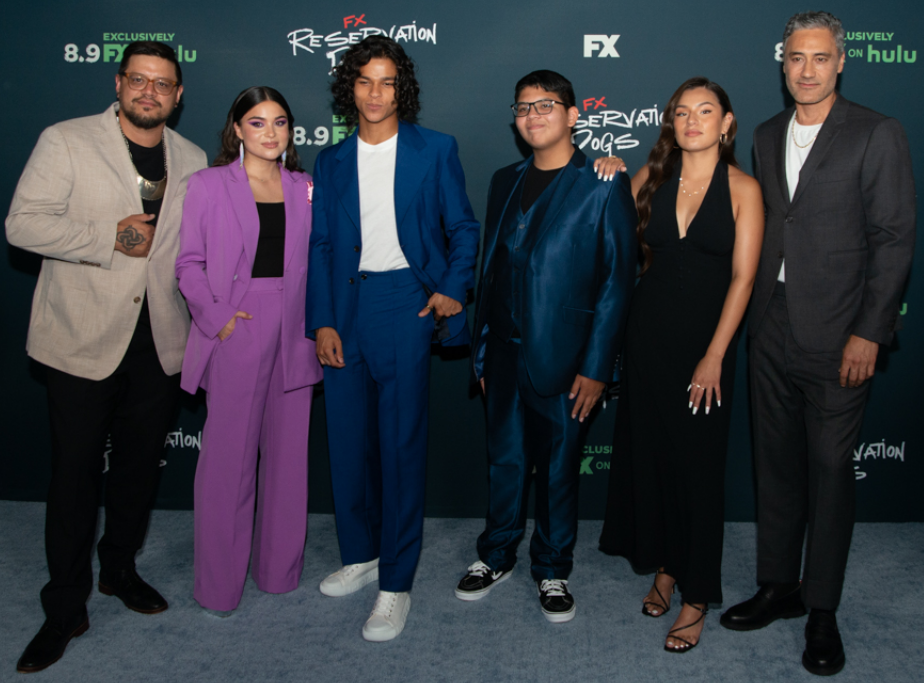
- Details
- By Native News Online Staff
November has been designated as Native American Heritage Month. The origin of celebrating Native American Heritage Month can be traced back to the first American Indian Day that was celebrated in May 1916 in New York. The event culminated an effort by Red Fox James, a member of the Blackfeet Nation who rode across the nation on horseback seeking approval from 24 state governments to have a day to honor American Indians.
More than seven decades later in 1990, then-President George H.W. Bush signed a joint congressional resolution designating the month of November “National American Indian Heritage Month.”
Want more Native News? Get the free daily newsletter today.
Similar proclamations have been issued every year since 1994 to recognize what is now called “American Indian and Alaska Native Heritage Month.”
The White House on Friday released President Joe Biden’s Native American Heritage Month Proclamation for this year. In the proclamation, President Biden writes, “Native American roots are deeply embedded in this land -- a homeland loved, nurtured, strengthened, and fought for with honor and conviction. This month and every month, we honor the precious, strong, and enduring cultures and contributions of all Native Americans…”
In advance of recognizing Native American Heritage Month, the U.S. Census Bureau released some facts about American Indians and Alaska Natives.
Did You Know?
9.7 Million
The number of those who identified as American Indian and Alaska Native alone or in combination population in the 2020 Census. The 9.7 million is 2.9 percent of the total population of all people living in the United States. This compared to 5.2 million (1.7 percent) in 2010.
3.7 Million
In 2020, the American Indian and Alaska Native alone population (3.7 million) accounted for 1.1 percent of all people living in the United States, compared with 0.9 percent (2.9 million) in 2010. The American Indian and Alaska Native alone population grew by 27.1 percent, and the American Indian and Alaska Native in combination population grew by 160 percent since 2010.
324
The number of distinct, federally recognized American Indian reservations in 2020, including federal reservations and off-reservation trust land.
574
The number of federally recognized Indian tribes in 2020. These tribes are spread across the United States from Florida to Alaska.
142,972
The number of single-race American Indian and Alaska Native veterans of the U.S. armed forces in 2019.
More Stories Like This
Native News Weekly (August 25, 2024): D.C. BriefsUS Presidents in Their Own Words Concerning American Indians
Rep. Grijalva Pepper-Sprayed by ICE Agents During Restaurant Raid
Next on Native Bidaské: Preserving Indian Health with A.C. Locklear
Hozhonigo Institute Helps Drive $34.5M in Grant Pipeline for Tribal Communities
Help us defend tribal sovereignty.
At Native News Online, our mission is rooted in telling the stories that strengthen sovereignty and uplift Indigenous voices — not just at year’s end, but every single day.
Because of your generosity last year, we were able to keep our reporters on the ground in tribal communities, at national gatherings and in the halls of Congress — covering the issues that matter most to Indian Country: sovereignty, culture, education, health and economic opportunity.
That support sustained us through a tough year in 2025. Now, as we look to the year ahead, we need your help right now to ensure warrior journalism remains strong — reporting that defends tribal sovereignty, amplifies Native truth, and holds power accountable.
 The stakes couldn't be higher. Your support keeps Native voices heard, Native stories told and Native sovereignty defended.
The stakes couldn't be higher. Your support keeps Native voices heard, Native stories told and Native sovereignty defended.
Stand with Warrior Journalism today.
Levi Rickert (Potawatomi), Editor & Publisher

